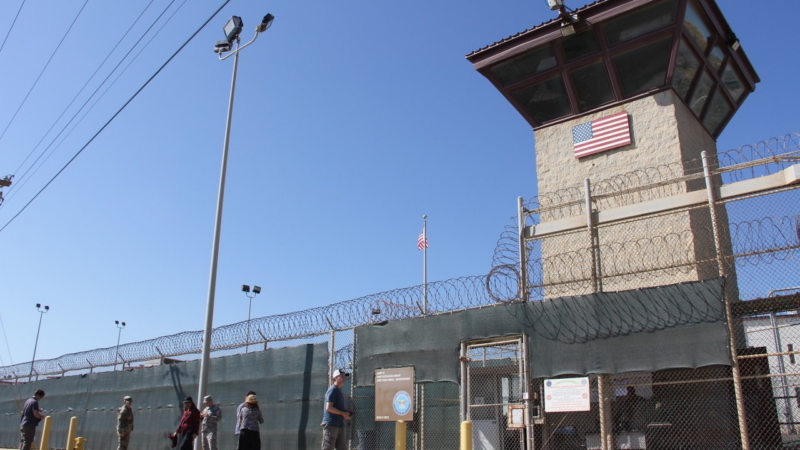Climate change plays a role in global rise of dengue fever
In 2023, some 6 million cases of dengue fever were reported worldwide — more than ever before. Then, 2024 blew that record away. More than 12 million cases have been reported worldwide so far this year.
Case numbers had been rising for years before that, though. Now, a new study awaiting peer review suggests that climate change has likely played a significant role in the expansion of the disease from 1995 to 2014, according to an analysis presented in November at the American Society of Tropical Medicine and Hygiene conference in New Orleans. Over that time period, climate change increased the caseload by roughly 20% across the 21 countries in the study — all places where dengue fever was already established, like Indonesia, India and Brazil.
The numbers could skyrocket with further climate change, even beyond the record-breaking case numbers from the past few years, says Erin Mordecai, an infectious disease expert at Stanford University and one of the authors of the new analysis.
“Many of the places in the study region are going to more than double their projected dengue incidence” if human-caused climate change continues to aggressively heat up the planet, she says. But the growth could be contained — not stopped, but at least minimized — if climate action keeps global temperatures in check, she stresses.
Dengue fever is the most common tropical disease in the world. In about a quarter of cases, it can drive painful fever and the sensation of aching joints and bones leads to its common name “breakbone fever.” In a small percentage of cases — and most often when someone contracts the disease for a second time — it can be fatal.
Millions of cases of dengue fever play out every year worldwide. But there is currently no commonly available vaccine for adults, and little beyond palliative care to manage the disease once contracted.
Climate fingerprints on dengue fever
Dengue fever is spread between people by two species of mosquitoes, Aedes albopictus and Aedes aegypti.
“Mosquitoes are exothermic,” or cold-blooded, Mordecai explains. “So when the temperature gets warmer, everything that their body does speeds up.”

Mosquitoes grow faster. They more effectively replicate the virus in their guts. They even bite more aggressively as temperatures warm toward those ideal levels.
Previous research in laboratories showed that those species of mosquitoes thrived within a predictable temperature range. For Aedes albopictus, the ideal Goldilocks temperature was roughly 79 degrees Fahrenheit. For Aedes aegypti, it was slightly higher, a balmy 84 degrees.
There is a built-in limit, says Mordecai: Too far past those Goldilocks temperatures and mosquitoes suffer and start to die. And a dead mosquito can’t spread disease.
The researchers could track changes in temperature over time in tandem with changes in reported disease cases. And using climate models, they could tease out how much of the temperature rise in each location could be blamed on human-caused climate change — a technique called attribution. Then, using sophisticated statistical techniques borrowed from economics, they could link the human-driven temperature increases with increased caseloads.
Similar strategies are now commonly used to diagnose human-caused climate change’s fingerprint on extreme weather like heat waves or hurricanes. But the new analysis is one of the first to explicitly link climate change to changes in infectious disease cases.
“Understanding how much of the increase in disease can be attributed to climate can give us more confidence in our predictions for how infections are going to respond to future climate changes,” says Marta Shocket, a disease ecologist at Lancaster University in the U.K. “And this can help us do better long-term planning for how we allocate different public health resources.”
Overall, the researchers found that temperature conditions generally favor the expansion of the disease, especially in areas like highland Mexico, Bolivia and Brazil. Hotter areas, like Thailand and Cambodia, have seen growth as well, but smaller marginal increases because temperatures were already near the mosquitoes’ upper limits.
They could also look into the future to see where risks might emerge — and how many cases could be in store in an even hotter future. Many parts of South America, particularly those that are at the cooler end of the mosquitoes’ preferred temperature range now, could see their caseloads double by the middle of the century if warming continues on its current trajectory. Only Cambodia was projected to see a drop in cases.
“A lot of regions that are more temperate will become more suitable — and what’s scary is that it happens to overlap a lot with really densely populated cities,” says Jamie Caldwell, an infectious disease researcher at Princeton University who was not involved in the study.

The study did not include countries where dengue fever is still rare, a category which includes the U.S. But the number of cases within U.S. borders has also risen sharply in recent years, in hot, humid regions like Florida and southern Texas. But in 2023, several cases of locally acquired dengue fever were reported for the first time in Southern California. More were identified this year in Los Angeles County.
When dengue caseloads are high in the rest of the world, it increases the chances the disease can make its way into new areas, like the U.S., says Katharine Walter, an epidemiologist at the University of Utah.
“The world is more connected than ever before, and country borders are artificial,” she says. “Unchecked viral transmission doesn’t stay in one place.”
Public health efforts still matter — a lot
A hotter planet contributes to the expansion of the disease — but it is far from the only reason, says Benny Rice, a disease ecologist at Princeton University. Dengue fever, like other diseases spread by “vectors” like mosquitoes or ticks, is controlled by a vast array of factors.
Urbanization — particularly in unplanned developments like those springing up on the outskirts of cities worldwide — often creates mosquito havens, leading to a higher likelihood of disease outbreaks. Global travel also allows the disease to spread quickly and easily between regions. Other weather factors, like the frequency and intensity of rainfall or extreme weather, also influence the dynamics of dengue outbreaks.
In some ways, all that complexity represents opportunity, says Rice. He points out that even if climate change influences 20% of dengue cases — or even more — that leaves 80% of cases that could be reined in. “The public health interventions that have existed for years are more important than ever,” he says — from efforts like aggressive efforts to curb mosquito populations to developing strong local networks of medical care.
Nonetheless, the study shows that “the climate really gives context for where and when outbreaks could occur,” Caldwell says.
The analysis suggests dengue cases will continue to skyrocket as Earth’s climate continues to warm. By the middle of the century, the number of cases could rise by 60% as more parts of the world enter the mosquito-friendly temperature zone.
But Mordecai says that points to a clear solution: alongside the other public health measures, any success at slowing Earth’s warming by reducing planet-warming emissions will lessen the risks.
Adrien Brody dedicates Golden Globes win for ‘The Brutalist’ to his immigrant family
The post-war epic was nominated in several categories. Like Brody's real-life mother, Brody's character is an immigrant from Hungary who fled conflict.
Biden makes an 11th-hour move to block coastal oil drilling
President Biden has issued an executive order blocking drilling for oil in more than 625 million acres of U.S. ocean. It's the largest such move in history, but is almost guaranteed to be challenged under the incoming Trump administration.
U.S. transfers 11 Yemeni prisoners from Guantánamo to Oman
The Biden administration's move leaves just 15 detainees at the U.S. military prison at Guantánamo Bay, Cuba. Oman will help resettle the men and provide security monitoring.
Hamas and Israel are negotiating the release of 34 hostages from Gaza
The deal would secure release of a third of the approximately 100 hostages who remain in Gaza, including two dual U.S.-Israeli nationals. In return, Israel would release some Palestinian prisoners.
Millions of public workers are set to get higher Social Security benefits. Here’s why
Public service workers, including some teachers, firefighters and police officers, may soon see their Social Security payments increase by hundreds of dollars monthly.
Under the shadow of the Jan 6. 2021 riot, Congress certifies the 2024 election
Four years after the riot at the Capitol, Congress meets under heavy security and a blanket of snow to certify the 2024 election.





